“The next generation of real-time strategy gaming!” proclaims the marketing blurb for Age of Empires 4. This is technically true, since aside from assorted mediocrities like Grey Goo and Company of Heroes 2 I don’t think anyone has taken a proper big (or at least medium-sized) budget stab at the classic RTS since Blizzard released Starcraft 2 back in 2010. Unlike those failures, Age of Empires 4 has the support of a big franchise name, a big publisher — they don’t get any bigger than Microsoft — and it’s being developed by Relic Entertainment, who are in theory a seasoned RTS studio thanks to their experience with Dawn of War and Company of Heroes. But if Age of Empires 4 is indeed the next generation of real-time strategy gaming, then I have to say it looks a hell of a lot like the twenty year-old Age of Empires 2.
To be completely fair to Relic, Age of Empires 4 is a better game than I was expecting them to make based on their recent (or semi-recent) track record. I think there’s finally been a general realisation that game development studios are a lot like the ship of Theseus; they’re constantly undergoing a churn in personnel as older developers leave to do their own thing or are “promoted” to management positions and new blood is brought on board. In recent years we’ve seen several studios who previously were known for releasing nothing but classics — Blizzard and Bioware are the ones who most immediately spring to mind — abruptly send their reputation straight into the toilet with a string of duds1. Afterwards the question is always asked: how could this company release such a bad game when they clearly know how to make a good one? And my answer is always that these companies have been around for multiple decades at this point and the people who developed Warcraft and Mass Effect are long, long gone; all that’s left is the name attached to a mostly-new group of developers who, for whatever reason, can’t recapture that same magic.
Relic are another great example of this. Dawn of War and Company of Heroes were both incredible games. They were also released in 2004 and 2007 respectively, and while the company still had it as late as 2010’s Chaos Rising the writing was on the wall with Company of Heroes 2 in 2013: Relic no longer knew what they were doing when it came to the RTS, which was subsequently confirmed with the disastrous Dawn of War 3 in 2017. When Age of Empires 4 was announced with Relic at the helm a couple of years ago I groaned inwardly since it seemed like this would just be another beloved franchise for them to drive straight into a brick wall. Nothing I saw from the prerelease marketing gave me cause to doubt this assessment, and so I gritted my teeth and clicked the “Download” button on Game Pass more out of a sense of misguided obligation to see just how bad it was than because I actually wanted to play it.
I’d like to say that I was pleasantly surprised by how Age of Empires 4 turned out, but this is patently untrue. I was surprised, at least, because my expectations were rock-bottom low. Age of Empires 4 has not done itself any favours whatsoever by being based heavily on Age of Empires 2 — same time period, same buildings, (sort of) the same units, same technologies, same gameplay. This gives it a pair of extremely weighty problems right off the bat: one is that Age of Empires 2 is an RTS classic and it’s extremely unwise for Relic to invite such direct comparisons in this way. You’re going to be seeing a lot of comparisons to AoE 2 in this review, which I would usually try to hold back on after a twenty year gap between the two games but which are literally unavoidable in this case because Age of Empires 4 is in many respects a straight remake of AoE 2. And that runs slap bang into the second problem with this idea: there was already a very good remake released at the end of 2019 in the form of Age of Empires 2: Definitive Edition, so it’s not like Age of Empires 4 can get away with updating the UI and graphics and adding some modern quality of life features and a modern multiplayer backend and calling it a day., because that’s already been done
Possibly the most surprising thing about Age of Empires 4, to me, is that it doesn’t do this. It might use AoE 2 as a baseline but it does try to carve out its own identity, which leads to some massive regressions from what you can find in AoE 2: Definitive Edition and all of those unfavourable comparisons that I’ll get into dissecting in just a bit, but also a couple of additions that I do think justify Age of Empires 4’s existence as a separate thing. By that very low metric Relic have managed to achieve a measure of success here; Age of Empires 4 might be constantly standing in the shadow of Age of Empires 2, but it at least manages to avoid being crushed underfoot.
It’s probably worth tackling Age of Empires 4’s skirmish and multiplayer first, whose foundation is largely unchanged from the formula that was established in the original Age of Empires a full quarter-century ago. The idea is that you start each game in the Dark Age with a town center and a few villagers. You set the villagers to gathering food and wood and your town center to building more villagers. You herd sheep back to your town center for a quick food boost, build houses and mills and lumber camps to support your constant production of villagers (and thus the total rate at which you can gather resources), get a barracks up to produce a few military units to fend off wild animals and raiding parties, and then focus on teching up to the Feudal Age. This unlocks more buildings and technologies and units, so you build all of them while creating additional outposts for resource collection. Perhaps at this point you’ll get involved in a short war with a neighbour but things are still very much in the raiding and harassment phase and it’s difficult to deliver the coup de grace even if you’ve crippled your opponent; at the very least it’ll take so much time that you’ll tech up to the Castle Age while it’s happening, which is where the real war game starts because you can build Keeps to quickly entrench yourself in a particular bit of territory. Whether the game progresses from there onwards to the final Imperial Age is a function of how many opponents you have and how much of a fight they’re putting up; once they’re all dead, you win.
Age of Empires has always been incredibly war-focused, and Age of Empires 4 is no exception. Just like its predecessors there are nominal Wonder and control point victories (here called Sacred Sites) but it’s far easier to just build a lot of trebuchets and systematically dismantle the enemy cities one town center at a time. It’s here that we also run into the first major point of divergence from AoE 2, though: unit variety. Under the hood the two games have much the same setup — the Barracks builds cheap melee infantry that use food and wood and expensive melee infantry that use food and gold, the Archery Range builds cheap archers that use food and wood and expensive crossbowmen that use food and gold, the Stables build cheap cavalry that use food and w- oh look, you get the idea. AoE 2 had some nice set dressing around this, though, where the line of expensive melee infantry progressed through the various Ages from Macemen, to Men-at-Arms with sword and shield, to the Two-Handed Swordsman, and then finally to Champions. I can remember that progression even now, and not just because I spent a fair chunk of my time in 2020 playing the Definitive Edition. It’s distinctive. It has flavour. It works.
Contrast this with the Age of Empires 4 approach. In the Dark Age, you can build Vanguard Men-at-Arms. Then in the Feudal Age, you tech up to Early Men-at-Arms. The Castle Age gets you just regular Men-at-Arms, and the Imperial Age Elite Men-at-Arms. While their visual look does update with every age advance, their equipment does not; they’re always armed with sword and shield, every time. It’s not quite the historical Total War problem of every unit being a variant of spearman in different-coloured trousers, but it’s close. And because the name doesn’t change, and the weapons don’t change, and the rest of the look doesn’t really update enough for you to notice from your lofty, godlike perch above the battlefield, this feels like you’re using the same unit for the entire length of the game. And since meaningfully different warfighting tech is the primary way the game reflects the progression through its various Ages back to you, advancing an Age feels far less impactful in gameplay terms than it does in AoE 2. The same story is repeated for the Spearman — available in regular, Hardened, Veteran and Elite flavours — the Horseman, the Archer and the Crossbowman; you can build a Horseman in the Dark Age and upgrade it all the way to Elite Horseman in the Imperial Age, but it’ll always be a dude on a horse with a spear.
Now, I do understand why Relic have done this. It’s been a long time since the last Age of Empires game and they’re trying to appeal to a whole new audience here, not the dwindling population of RTS grognards. If you’re completely new to RTS, the AoE 2 approach of having to keep track of four Age-specific units with different names and different looks that are actually all part of the same unit line and behave the same way could be seen as unnecessary overhead. Age of Empires 4 reduces the form to fit the function; a Spearman is always a Spearman and a Horseman is always a Horseman and they have the same weapon and same recognisable silhouette throughout the game. That’s much less information for a new player to have to absorb before they understand what is going on, and in theory makes the game much more accessible and readable.
However, I have two counterarguments to this approach. First is that in AoE 4’s case it massively oversimplifies things, reducing the basic unit pool down to just six: two infantry, two archer, two cavalry. There’s also siege engines, which sort of exist off to the side as specialised tools thanks to the way AoE 4 redesigns siege warfare, and civilization unique units — but how many of those you get is very dependent on which civ you pick. Otherwise you’re just playing around with the same six units for the hour plus that a skirmish match takes to play out. Related to this is my second counterargument, which is that Dota 2 and League of Legends have millions and millions of players who have managed to learn the intricacies of 100+ heroes per game; your average video game player is capable of grasping more than six things at once, if they take the time to learn, and the RTS space is one of the few where I’d expect a game to not cater to the lowest common denominator, since if you do you just end up with a product that feels too basic and dumbed-down. Just like Age of Empires 4 ultimately does.
The UI really doesn’t help here, either. In fact Age of Empires 4’s UI is one of the worst strategy game UIs I’ve seen since Rome 2. Distinctive unit and technology icons? Pffft, what if we just make them all stylised unit and technology iconography picked out in gold over a background that’s either brown (for units) or green (for technology), turning your building panes into a mass of unreadable crap. Group-selecting a bunch of units and want to select a certain type of unit within that selection? Good luck finding the one you want in the sea of identical brown icons. Researching multiple technologies at once? Hope you enjoy clicking back to your technology buildings periodically to see how things are going, because Age of Empires 4 doesn’t surface research globally the way Age of Empires 2 Definitive Edition does. It just doesn’t feel good to interact with; Age of Empires has always had a problem where it’ll have techs like Iron Casting and Bodkin Arrow available for research, but the in-game impact of these things is +1 to a unit’s attack stat. It needs to work as hard as it can in order to convince me that I’m not just adding parsimoniously small numbers together — that this is actually a flourishing medieval culture that I am in charge of — but the Age of Empires 4 UI is so uninspired, and so simplified, that it actually enhances this sterile, mechanistic feeling rather than minimising it.
And that’s a real shame, because if you look beyond the broad sweep of the gameplay mechanics and start to drill down in the specifics of the eight cultures/civilizations that Age of Empires 4 launches with, you can start to see it pulling its weight. I think that the single most impressive thing AoE 4 does, period — in fact this is the primary reason I accept Age of Empires 4 existing at all – is give every single civilization unique building and unit art for every single age. AoE 2 had a couple of sets of culture-specific building art (shared by multiple civilizations) that the Definitive Edition expanded upon, but Age of Empires 4 goes far further and the amount of work required to do so really cannot be understated; we are talking about 32 separate models for a Town Center, 32 separate models for a Barracks, 32 separate models for a Spearman — and repeat for half of the units and buildings in the game. (The other half require a little less work thanks to being available only to certain civs, or only in certain Ages.) I suspect it’s only because of the dumbing down of the unit rosters that this is possible at all, as if AoE 4 had any actually significant unit variety the number of potential unit/age/civilization combinations would become unviable. As it is the civilization theming is extremely welcome, since it’s the only thing stopping Age of Empires 4 from sliding into the abyss; even the English and the French are immediately different, with the English buildings and units having very functional, baseline medieval styling compared to the French, who are all polished stone turrets and flamboyant helmet plumes.
Because there are a much smaller range of civilizations to play with (Age of Empires 2 launched with 13), Age of Empires 4 can also afford to extend this variety to more than building styles and unit barks. Age of Empires 2 kept the gameplay differences between the various civs relatively small — depending on which civ you picked certain units and technologies would be available (or not), you’d get a different unique unit built from the Castle, and also some subtle economy tweaks and bonuses that, while substantial enough to be felt while you were trying to boom your way to the Castle Age, I always thought weren’t really enough to make the differences between the Goths and the Franks or the Teutons and the Vikings properly meaningful. The Age of Empires 4 approach is far more daring; there might only be eight civilizations in the game this time around, but every single one of them has some Starcraft-style gimmick. The Chinese get multiple unique units and buildings and also Tax Collectors, who patrol between the various resource collection buildings hoovering up bonus gold income. The Rus have much stronger wooden fortifications and a special form of tower called the Wooden Fortress, as well as Hunting Lodges which increase the food gained from hunted animals and give you a gold payout every time one is killed. The Holy Roman Empire get a version of the Monk called a Prelate, who is available from the start of the game and can inspire Villagers to gather resources more quickly; they also have more special military technologies than any other faction I’ve played with so far — it turns out one of the reasons that Macemen and Two-handed Swordsmen were removed from the mainline melee unit progression is because the Holy Roman Empire stole them as technology upgrades for its own Man-at-Arms that (sigh) boost its attack stat. The Delhi Sultanate’s technologies have a high base research time but no resource cost, and garrisoning Scholars inside special buildings can speed up research considerably. And then there’s the Mongols, who flat out ignore several gameplay mechanics by starting at the max population cap (so they don’t have to build Houses) and who can move what few buildings they do have around the map at will. This means they don’t have much of a use for Stone, so they build Ovoos on top of Stone deposits and then any unit-producing building in the radius of the Ovoo can invest Stone to build duplicates of whatever is currently being trained.
This is all good stuff and arguably an improvement over the way Age of Empires 2 did it, and it’s thanks to the civilization design that I’ve actually had fun with Age of Empires 4. True, it’s a very limited sort of fun, where I fire up a succession of skirmish games to see what the next gimmick is before moving on to another one, but that I had fun with it at all is more than I was expecting from Relic, and so I think that this is the one true success that Age of Empires 4 can lay claim to. However, if that’s the case then it’s a somewhat qualified one since I’m not sure the more impactful civilization-specific traits were worth oversimplifying the shared ones for; nearly all of them are economy- or technology-focused, so they don’t really serve to counterbalance the now extremely-limited unit roster. In fact some of these civilizations don’t even have all six of the basic units available for the entire length of the game – six of the eight can’t build the Man-at-Arms line until the Castle Age, for crying out loud, as being able to build them earlier than this is now seen as a civilization-specific trait that’s limited to the English (who can build them in all ages) and the Holy Roman Empire (who can build them from the Feudal Age onwards). Most civilizations are limited to Spearmen only in the Dark Age, and it’s really really noticeable how little there is to do in the early stages of the game now beyond pumping out villagers and beelining for the Ages that will let you build more interesting things.
Speaking of, Age of Empires 4 also switches up how you advance Ages: you no longer do it via an expensive technology that provides no other bonuses, but instead invest the same amount of resources into constructing a unique building called a Landmark. Landmarks have wonder-style effects like periodically spawning free units or providing big boosts to nearby economy buildings; each civilization gets a choice of two per Age, with the one they don’t pick being permanently locked off (unless you’re the Chinese, who can build both as one of their civ traits). Landmarks take time and a lot of villagers to finish, but once they’re done you get the landmark bonus and advance to the next Age. I’m lukewarm on the concept of Landmarks as buildings, as I’ve only seen a couple so far that weren’t more than situationally useful, but I do like them because of how they change the warlike victory condition for skirmishes; instead of having to kill all of an opponent’s unit-producing buildings or all of their Town Centers — which is super annoying if they have a lot of far-flung outposts in corners of the map – you instead just have to destroy all of their Landmarks, which is far more manageable and keeps games from spiralling into multi-hour hellwars.
The final big change AoE 4 makes to the basic Age of Empires 2 formula is in how it deals with siege warfare. Previously Age of Empires made it very difficult for regular units such as Spearmen and Horsemen to damage buildings, especially once a couple of Ages had gone by and you had some building HP and armour technologies researched; you could do it if you had time and an overwhelming advantage in manpower, but if you were fighting any organised opposition you needed siege engines such as battering rams and trebuchets to quickly destroy target buildings while your main army kept the enemy from smashing them to bits. Age of Empires 4 flips this around slightly, with all melee units getting a special “burn building” attack that they automatically use when told to attack one, and this can torch normal buildings very very quickly. However, if the player you’re attacking has built stone buildings — or god forbid, stone walls — then you’re going to have to call in the siege engines for two reasons. One is that stone fortifications have a much wider range of defensive mechanics available, from being able to install additional ballistae and cannon on Keeps and Towers to having a special Boiling Oil attack you can research (with an actual visible boiling oil effect when it fires) that makes getting into melee range of a Keep or Tower extremely dicey. And then even if you did, the other reason you need siege engines to tackle them is that stone fortifications do not burn, period; basic infantry literally can’t hurt them.
So, unlike AoE 2 where you could potentially get by without them (although it would be an extremely bad idea to try), Age of Empires 4 makes siege weapons compulsory. Fortunately it’s also smart enough to make the basics much more palatable, as Battering Rams are no longer built by the Siege Workshop but are instead constructed on the front lines by your soldiers. A Battering Ram is resistant to arrow fire and it acts like a transport, allowing you to stick up to sixteen infantry inside for protection while it smashes down the front door. All siege weapons have the same vulnerabilities to infantry/cavalry fire attacks that normal buildings do, though, so you need to be careful that sallying infantry doesn’t chop your Battering Ram into pieces. If you don’t fancy that risk then an alternative option is the new Siege Tower, which can trundle up to a stone wall — all stone walls now have battlements that you can station archers and other troops on — and disgorge eight of your best fighters onto it, from which point they will hopefully murder any defenders and then descend into the settlement proper.
These basic tools of siege warfare always being available makes the siege weapons that you do build at the siege workshop more specialised. Springalds (a renamed Scorpion) are for smashing up other siege weapons before they can fire and do next to no damage to buildings, Mangonels retain their huge shotgun-like hail of shot and excel at wiping out clusters of troops, while the Trebuchet remains the choice for dismantling a set of fortifications from well beyond the range of any Tower or Keep armament. The Springald and the Mangonel are very definitely not things that you build for taking down a settlement; they have a niche on the battlefield, but only the Trebuchet (and also the Bombard, which has a slightly shorter range but does more damage) is designed for demolishing buildings. All siege weapons now need to set up before firing, too, making shoot-and-scoot Mangonels a bit less of a pain; carting them around feels a bit more like a proper medieval siege train than it does Tanks: Middle Ages Edition, and the ones intended for combat need to be properly micromanaged in order for them to survive an encounter.
I think that these changes to siege warfare are, in principle, a good idea. When siege warfare works in Age of Empires 4, it really works, with flaming arrows raining down from castle walls onto Battering Rams and Siege Towers that are slowly creeping forwards to do their damage, while a party of infantry gets ready to sally out to try and burn them before they can do too much damage. However, the underlying systems and polish aren’t quite there to properly support AoE 4’s particular vision of siege warfare yet; it’s been a remarkably bug-free experience so far, which is something that I value increasingly highly these days, but what bugs and glitches I have seen have mostly been focused around unit pathfinding on and around walls — things like siege weapons getting stuck in gates because I placed a tower slightly too close to the entrance2, units getting lost on their way up/down from a wall, or simply stuck inside a gatehouse because there’s another unit blocking the door. Micromanaging siege weapons is also painful, especially because Age of Empires 4 really, really wants you to use Attack-Move — its compulsory and over-long tutorial explicitly makes you do this three times but doesn’t teach you how to do regular Attack orders at all — but the list of target priorities that the AI has is really, really stupid. If you have a group of Bombards in the middle of a city that are busy reducing the important targets to rubble, and a horde of angry infantry appear who are rather intent on making you stop, you cannot tell your own infantry to engage them with Attack-Move. If you do, then what will happen is that your troops will ignore the archers pelting them with arrows and the horsemen throwing burning torches onto your Bombards and instead start trying to blow up the nearest House, just because it’s tagged as an enemy and happened to be two feet closer to them. The Stand Ground order that should make them ignore nearby buildings is inconsistent at best, so I have completely given up trying to use Attack-Move inside of a city and instead have to keep the infantry back behind my siege line so that I can give them real Attack orders without them getting distracted.
Looking back on all of this, I have to say I don’t think the skirmish/multiplayer side of Age of Empires 4 is all that much of a misstep. The UI is awful and that will never change, and the troop AI really needs a lot of work to avoid so much micromanagement, and it could really do with more unit variety, and it has far fewer civilizations available to play than Age of Empires 2 Definitive Edition — that last point is somewhat unsurprising, though, since Age of Empires 2 has been continuously expanded on for two decades now. If you asked me which of the two games I’d rather play, right now, then I would immediately answer “Age of Empires 2 Definitive Edition”. That’s still a no-brainer, as it’s the far superior game and Age of Empires 4 still has far too much overlap with it. But if you instead asked me which I’d rather play in five years’ time, then that’s a much more interesting question because while Age of Empires 4 might be barebones in a lot of places and I don’t think it’s a particularly good game right now, it does at least provide a surprisingly solid foundation to build upon for the future. The core of what is here is reasonably sound even if the execution is lacking, and so if Microsoft don’t forget it exists and pay Relic to keep adding in new factions, and maybe at least bring the UI up to parity with AoE 2 (I still can’t believe AoE 4 is missing UI features that the Definitive Edition has, the blueprint for doing it right is right there), it could eventually be a worthwhile alternative.
However, I also couldn’t shake the feeling throughout my time with AoE 4 that the skirmish and the multiplayer wasn’t where Relic’s primary focus was throughout the development process; Age of Empires 4 also ships with four single-player campaigns (as the Normans, French, Rus and Mongols), which is definitely a bold move considering that both Relic3 and the Age of Empires series do not have a particularly good track record where these are concerned. Age of Empires 4 continues this trend, riding that campaign rollercoaster down the hill and then straight off the cliff; there’s some decent design in some of the missions, albeit nothing I wouldn’t have seen in Warcraft 3 19 years ago, but whatever good might is present is hugely outweighed by stupid decision after stupid decision that make this the worst set of RTS singleplayer campaigns that I’ve played since… well, since Relic’s own Company of Heroes 2 back in 2013.
First, theming. Age of Empires 4 themes every single one of its campaigns, and in fact a large portion of the wider game, as a historical documentary. There are no characters to follow and nothing to get invested in, because everything that happens in every campaign is being narrated by the same tired documentary voiceover actor who is just reading whatever is put in front of her. Even in missions there are no characters with speaking lines; instead we get the narrator saying “Willikins the archer roused the English villages against the French” as you give your hero unit some movement waypoints. The entire game being related to me second-hand by a disinterested observer who is a thousand years removed from the events in question is an absolutely tremendous way to get me to not give a shit about anything I’m doing, and the kicker is that even by historical documentary standards Age of Empires 4 is absolutely terrible. There is an almost complete lack of detail, with only the broadest possible strokes of history outlined by the narration — inane statements like “Wallingford was the key to victory” are uttered with no further explanation or clarification as to why it was the key to victory. The Mongol army advances across Asia and “finds its way blocked by an army of forty thousand Rus”. Okay, who are these Rus and how did they get there? I still don’t know because the game didn’t tell me; as far as the game is concerned they just popped into existence one day as convenient targets for the first mission in the Mongol campaign. Age of Empires 4 is awful as an educational tool because it will teach you almost nothing about history; there are a few videos of crossbow and trebuchet demonstrations and so on, but the bulk of the content here is modern-day drone shots of famous historical monuments4 and battle sites with some crappy Animus graphics of soldiers superimposed on top. It is largely thanks to these videos — and there are a lot of them — that the Age of Empires 4 install size clocks in at a whopping 90 gigabytes of hard disk space, and all for content with far less educational or narrative value than the average episode of Time Commanders5.
Second, tone. Age of Empires 4’s campaigns do not follow a single person or army or military campaign, but instead consist of a series of isolated events spanning a hundred years or more. The Norman campaign, for example, follows the dynasty established by William the Conqueror as various challengers to the throne appeared from 1066 through to 1216. This is a weak through-line to follow at the best of times as you’re getting a chopped up, overly condensed version of history that’s made even worse by the awful, dispassionate documentary styling; however, there are points where it gets truly ridiculous in order to justify even the tenuous campaign theme that it does have, as you always have to be fighting on the side of the dynasty in question even if the members of that dynasty who were involved in this mission were demonstrably idiots. Here, this is a roughly paraphrased example of one of the mission briefings for the Norman campaign:
“This is King John. He was an idiot. Spent all of his money on expensive wars. Taxed the population heavily to pay for them. Pissed off the barons. Had to sign the Magna Carta to keep them happy. And then went back on it when it no longer suited him. The country is in open rebellion because he’s such a crappy failson of a ruler.”
“So anyway, in this mission you’re defending Dover castle to try and hold the crown for King John…”
Third, content. I have played the entire Norman campaign and the first two missions of each of the French, Rus and Mongol campaigns. I have come across exactly two missions so far that were not subtitled “The Battle of…” or “The Siege of…” Perhaps it’s wrong to be annoyed that Age of Empires 4’s campaigns are so war-focused when Age of Empires as a series has always been like this; however I really feel that nearly every single mission feeling like a throwback from the ‘90s where you group select a huge mass of units and steamroll the enemy is possibly not ambitious enough for an RTS made in 2021. For some of the missions you don’t even have to build the units yourself! The game just hands you an army and tells you to mash it into the opponent. For the rest it’ll start you with a fully built settlement and a sizable starting force that you just build up to unit cap and then go around razing all of the CPU settlements — you can even do this in the missions where you’re supposedly under siege by overwhelming enemy forces. You almost never get to build an economy or advance through the Ages, which is a rather curious omission for a game called Age of Empires. It’s absolutely baffling to me that the campaigns would intentionally cut out the most interesting part of the game and instead just offer you battle after battle, which merely serves to accentuate the fact that the basic combat mechanics haven’t changed since 1996 and exposes some of AoE 4’s more egregious issues, like the unit AI and pathfinding.
Usually when I encounter a set of singleplayer campaigns this bad my usual reaction is to wonder why they bothered; a hell of a lot of time and effort has gone into making something that I literally cannot bring myself to play any more when the actually decently-fun Skirmish mode is sitting right over there and I still haven’t gone through all of the civilizations yet. Age of Empires isn’t like Battlefield, though; it’s an RTS and singleplayer campaigns are supposed to be part of its DNA, and also there are glimmers of good design in here that make me think it didn’t have to be this bad, if Relic could somehow look at every single high-level decision that went into making Age of Empires 4’s campaigns the way they are and then go back in time and do the exact opposite. The best that I can say about them is that they’re not offensively bad, just incredibly bland and boring and uninspired, like the RTS equivalent of Ryvita. It’s hard to get angry about Ryvita, although if you forced me to eat more than one I’d probably change my opinion in a hurry.
Fortunately that’s not a problem I have with Age of Empires 4. I might boot it up a couple more times to finish trying out all of the civilizations and then I’ll delete those 90 gigabytes of high-definition videos so that I can install something else. It’s definitely not a good game, but at least where the skirmish mode is concerned it’s not a bad one either. It’s not a worthy successor to Age of Empires 2, but neither is it the complete disaster I was expecting from Relic. Would I be happy if I’d paid the RRP of £50 for it instead of trying it on Game Pass? Absolutely not — but I will at least check in on it again in a year or two to see what’s been added, which is definitely not something I saw myself doing prior to release. Age of Empires 4 does a hell of a lot wrong, but did not piss me off sufficiently to put me off the idea of ever playing it again. This is not a quote I see Relic putting on the Steam store page any time soon, but by their recent standards it counts as a roaring success.
- Blizzard are obviously exploring the deeper reaches of the sewage system now after the recent revelations about their company culture. ↩
- Should clarify here — stone towers are no longer built on their own, but must now attach to stone walls. That being the case the game should not have let me build one that close to the gate. ↩
- Dawn of War series excepted, for all that they eventually screwed it up with 3. ↩
- That this footage was clearly filmed by two regular guys with a high-def camera on a normal day leads to some unintentional comedy in places, like when they open the doors of Westminster to do a low sweeping entrance shot followed by a pan up to show the ceiling architecture…except they haven’t cleared the place of tourists so the reveal is actually a bewildered-looking woman clutching a coffee cup in one hand and a small child in the other staring at the camera wondering what the hell is going on. ↩
- Okay, I guess I’m going to have to explain this reference since it’s somehow been 17 years since Time Commanders aired: some absolute genius at the Creative Assembly somehow managed to convince the BBC to make a TV show where a team of contestants would play the role of commanders from famous historical battles, giving orders in real-time and reacting to events and so on. The medium through which they did so was a pre-release version of Rome: Total War running on high-powered PCs that could render thousands of soldiers at once at max settings, and at the time this was an extremely impressive thing to see. I think a not inconsiderable percentage of the viewers of the show were PC gamers drooling over the graphics. ↩

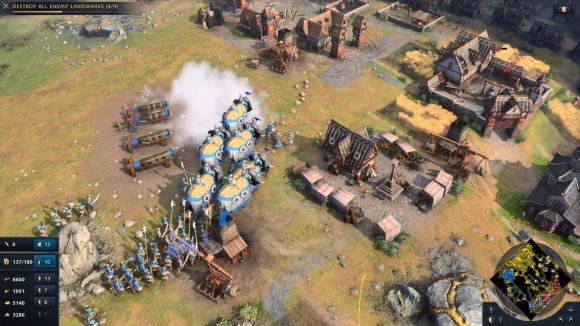
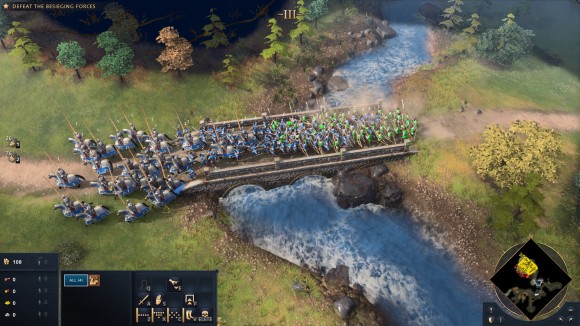
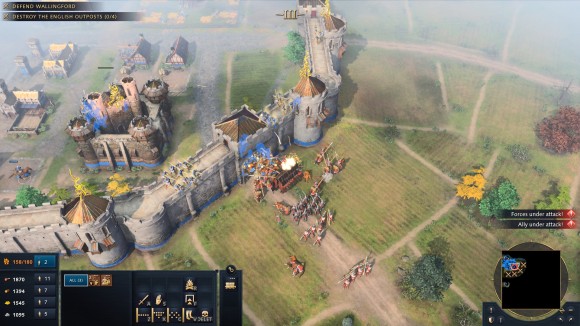
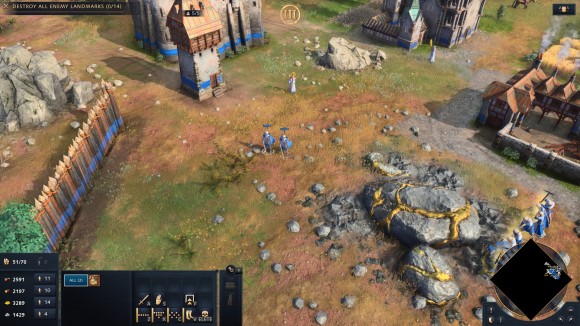
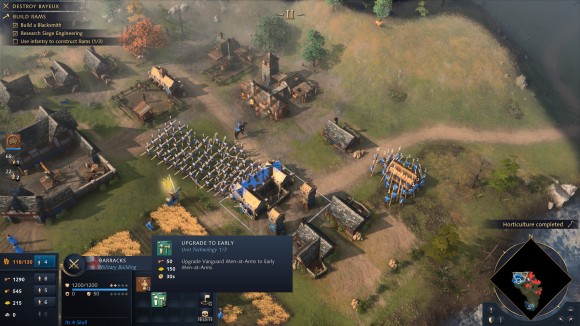
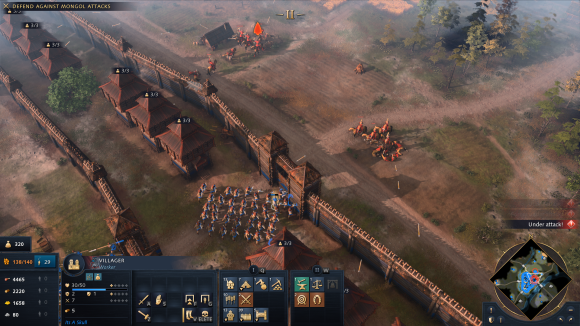
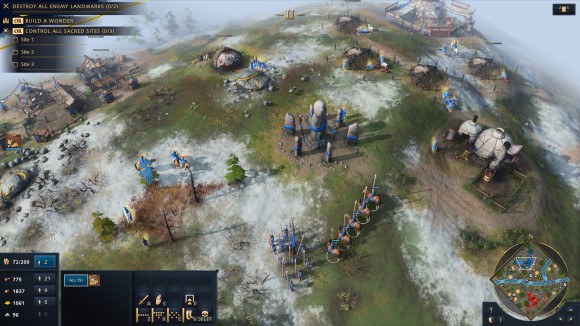
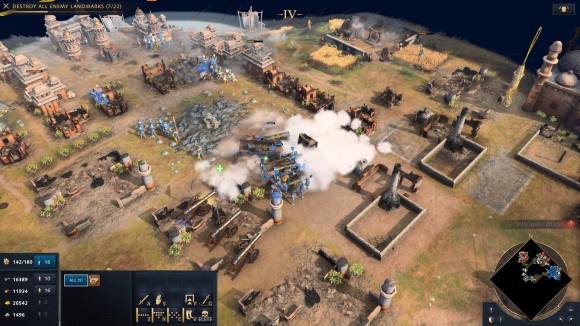
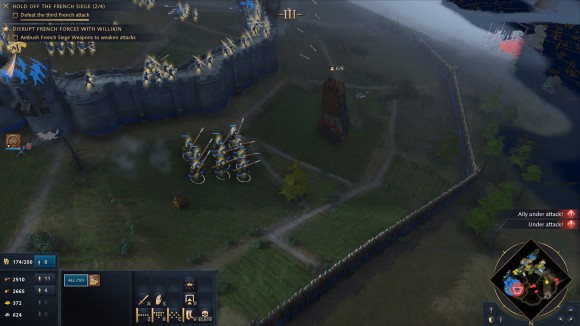
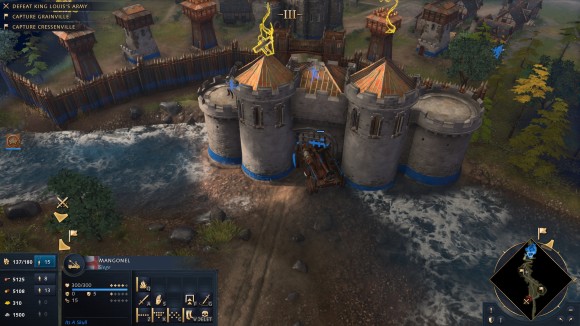
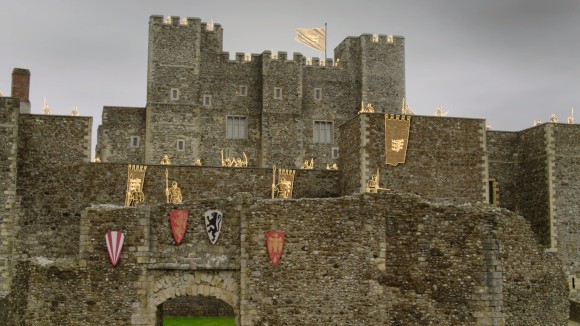
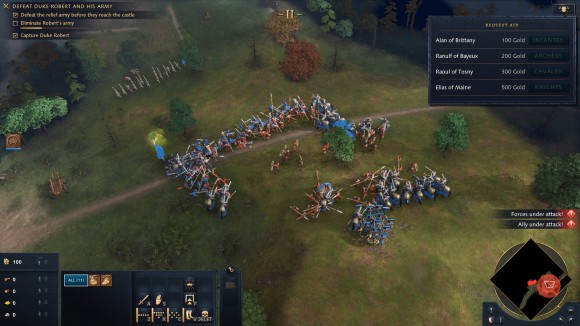
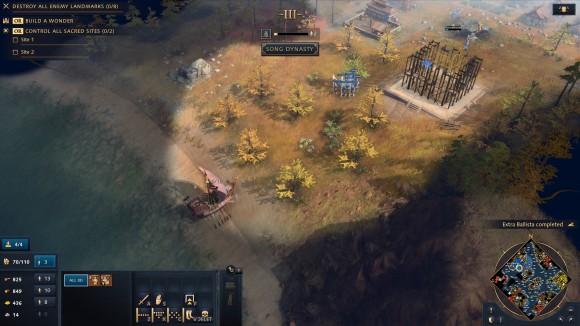
I know RTS as a genre doesn’t work for me but it’s history is so curious. It’s so defined by weird limitations and conventions. FPS genre goes through a revival of old-school boomer shooters, but with RTS it’s like they decided they’re never going beyond RTS versions of Doom, Quake and Duke Nukem. Dawn of War and Company of Heroes might have been the latest iteration on the formula not declared heretical. Games like Rise of Nations (and Legends) or even Age of Empires 3 hinted at some interesting developments but then it all went back to 1997.
Probably everyone who wanted something else besides replaying the same 1997 game has moved on to playing other genres that do specific RTS things better, like mobas, tactical games, empire builders etc.